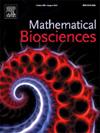Quantifying collective motion patterns in mesenchymal cell populations using topological data analysis and agent-based modeling
Abstract
Fibroblasts in a confluent monolayer are known to adopt elongated morphologies in which cells are oriented parallel to their neighbors. We collected and analyzed new microscopy movies to show that confluent fibroblasts are motile and that neighboring cells often move in anti-parallel directions in a collective motion phenomenon we refer to as “fluidization” of the cell population. We used machine learning to perform cell tracking for each movie and then leveraged topological data analysis (TDA) to show that time-varying point-clouds generated by the tracks contain significant topological information content that is driven by fluidization, i.e., the anti-parallel movement of individual neighboring cells and neighboring groups of cells over long distances. We then utilized the TDA summaries extracted from each movie to perform Bayesian parameter estimation for the D’Orsgona model, an agent-based model (ABM) known to produce a wide array of different patterns, including patterns that are qualitatively similar to fluidization. Although the D’Orsgona ABM is a phenomenological model that only describes inter-cellular attraction and repulsion, the estimated region of D’Orsogna model parameter space was consistent across all movies, suggesting that a specific level of inter-cellular repulsion force at close range may be a mechanism that helps drive fluidization patterns in confluent mesenchymal cell populations.

 求助内容:
求助内容: 应助结果提醒方式:
应助结果提醒方式:


